
PREV ARTICLE
NEXT ARTICLE
FULL ISSUE
PREV FULL ISSUE
HESS DIVO AUCTION 335Auction 335 from Hess Divo AG, Zurich will close December 6, 2018. Here's the press release. Some great coins here. -Editor Greek Coins with Excellent Pedigrees On December 6, 2018, Hess Divo AG will hold their 335th auction. It includes beautiful Greek treasures from, among others, the Abou Taam Family Collection. In addition, coin rarities from antiquity to the present day, from Switzerland, Europe, and all over the world will be sold. One special highlight: a collection of Japanese obans and kobans. Those who collect coins of great quality should mark their calendar for December 6, 2018. On what is celebrated in some countries as Saint Nicholas Day, the long-standing auction house Hess Divo AG will hold its 335th auction at the Hotel Baur au Lac. The auction includes a selection of the most beautiful coins – from antiquity to the present day, from Switzerland, Europe, and all over the world. 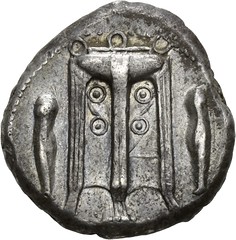 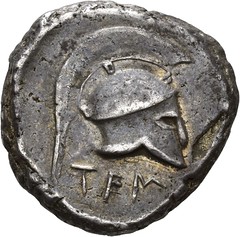 ((01 – No. 7. Temesa (Bruttium). Nomos, around 450 BC. From the Moretti and Dr. H. Maag Collections. Very rare. Nice toning. Extremely fine. Estimate: 40,000,- CHF.)) Greek coins from well-known collections
 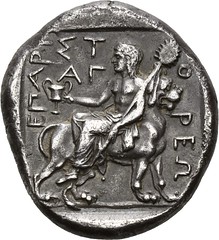 ((02 - No. 21. Abdera (Thracia). Tetradrachm, around 365-361. From the Prof. C. Severeanu and Gillet Collections. Extremely rare, probably the second known specimen. Beautiful toning. Extremely fine. Estimate: 125,000,- CHF.)) Possibly the most spectacular piece was part of the Kunstfreund Collection: It is a tetradrachm from Abdera that depicts Dionysus with a crater and thyrsus placed on the back of a panther. 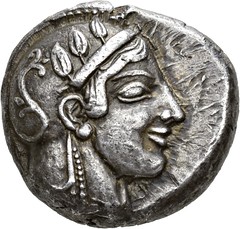 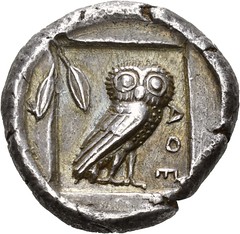 ((03 – No. 40. Athens (Attica). Didrachm, around 475-465. Transitional style. From the Consul E. F. Weber and Goekopp Collections. Very rare denomination of a rare issue. Beautiful toning. Extremely fine. Estimate. 100,000,- CHF.)) The pedigree of a didrachm from Athens dates even further back. It originates from the Consul E. F. Weber Collection, which was sold in 1908. This piece, which is depicted in all of the important reference books on the coinage of Athens, shows the owl in a well-defined Quadratum Incusum. 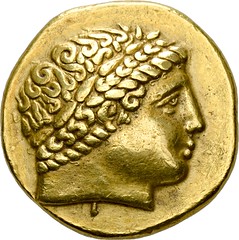  ((04 - No. 76. Celtic coins. Helvetii. Imitation of the gold staters of Philipp II. Double gold stater. From the S. Pozzi, Sandars, J. W. Garrett and John Hopkins University Collections. Very rare. Almost extremely fine. Estimate: 15,000,- CHF.)) Celtic rarities
 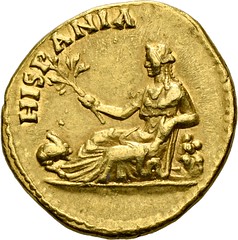 ((05 - No. 98. Hadrian, 117-138. Aureus, around 134-138. Rv. HISPANIA. From Adolph Hess AG - Bank Leu Auction 45 (1970), no. 522. Rare. Attractive style. Almost extremely fine. Estimate: 7,500,- CHF.)) Roman aurei as the highlight of the Roman coin section
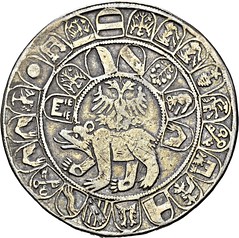 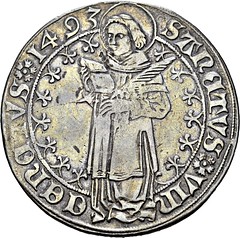 ((06 - No. 132. Switzerland. Berne. Guldiner 1493. From the Bachofen and Wüthrich Collections. Very rare. Nice toning. Very fine. Estimate: 5,000,- CHF.)) Hess Divo AG’s specialty: Swiss coins and medals
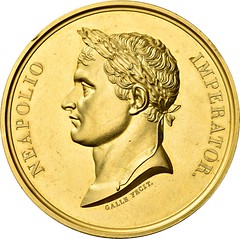 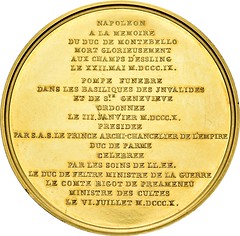 ((07 - No. 208. France. Napoleon. Gold medal 1810 by medalist Galle, minted to mark the passing of Maréchal Jean Lannes, Duc de Montebello. From the Bonaparte Collection, Leu Auction 14 (1975), no. 330. Extremely rare in gold. Estimate: 25,000,- CHF.)) European coins and medals
The mere fact that an official medal – which was originally used as a way of glorifying the head of state, his family, and his achievements – was dedicated to the descendant of a simple groom, gives proof to the powerful social implications of the French Revolution.  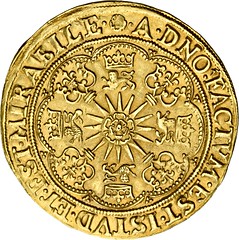 ((08 – No. 212. Great Britain. James I., 1603-1625. Spur Ryal. From the Willett, Addison, Lord Hastings, Roth and L. M. LaRiviere Collections. Extremely fine in this condition. Miniscule repairing marks at the upper gun port of the quarterdeck, otherwise extremely fine+. Estimate: 20,000,- CHF.)) The Spur Ryal of James I with a detailed depiction of a war vessel of the early 17th century, originates from the Willett Collection, which was sold at Sotheby in 1824. James I, a Stuart king who became the successor of Elizabeth I, is shown as an elderly man along with the English crown, a royal escutcheon, and a sword.   ((09 – No. 276. Germany. Cologne. Royal mint of the Merovingians. Dagobert, 623-639. Triens, undated. Mint master Gaucemares. Second known specimen. Perfectly centered, extremely fine. Estimate: 25,000,- CHF.)) An undated triens from Cologne which was made by the Merovingian mint master Gaucemares and which features a portrait of King Dagobert, is one of the highlights of the section containing coins of the German Empire. There are only two surviving specimens of this type. The one offered in this auction is the better preserved one of the two. 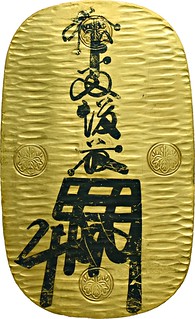 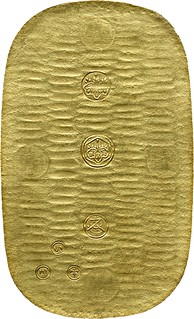 ((10 - No. 288. Japan. Edo period, 1837-1848. Oban, undated. Extremely rare. Including a certificate of the Japan Numismatic Dealers Association. Uncirculated. Estimate: 25,000,- CHF.)) An oban of the Bakufu
What is remarkable here is the fact that part of the marking was originally only applied using ink. This technique was retained in the production of obans, but was dismissed in favor of countermarks in the production of kobans. This should come as no surprise seeing as kobans were meant to be used in everyday money circulation, whereas obans mainly served as presents and rewards. 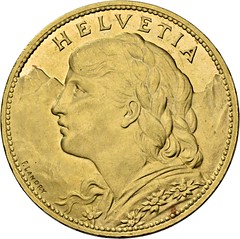  ((11 – No. 309. Switzerland. Swiss Confederation. 100 francs 1925, Berne. NGC MS62. Estimate: 10,000,- CHF.)) Coins in slabs
In this section, the extensive collection of Belgian patterns struck between 1833 and 1933 is particularly striking. The auction is available online at https://www.sixbid.com/browse.html?auction=5391 . You can purchase a copy of the catalog at Hess Divo AG, Löwenstrasse 55, CH-8001 Zurich, phone: +41 / (0)44 / 225 40 90, email: mailbox@hessdivo.ch .  Wayne Homren, Editor The Numismatic Bibliomania Society is a non-profit organization promoting numismatic literature. See our web site at coinbooks.org. To submit items for publication in The E-Sylum, write to the Editor at this address: whomren@gmail.com To subscribe go to: https://my.binhost.com/lists/listinfo/esylum All Rights Reserved. NBS Home Page Contact the NBS webmaster 
|